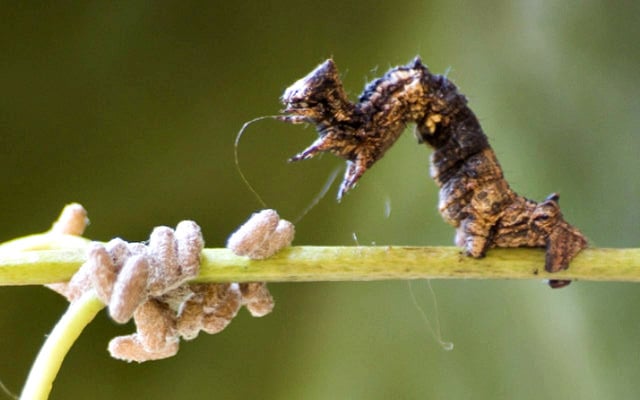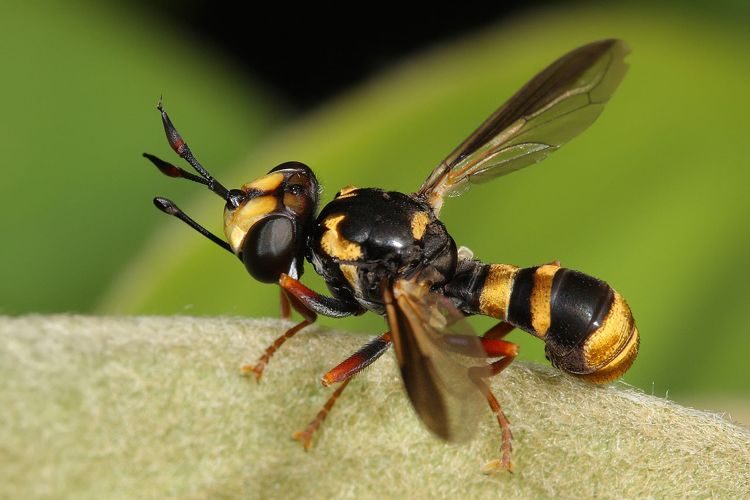Parasitic Wasp Turns Its Helpless Host Into a Bodyguard for Its Eggs

Thyrinteina leucocerae, the caterpillar of the geometer moth, is targeted as a host for a species of parasitoid wasp that can lay up to 80 eggs inside its body. The caterpillar’s reward is a job as bodyguard for the very parasites growing inside it and a slow, agonizing death. The Glyptapanteles wasp is one of […]
The Parasitic Fly That Eats Bumble Bees from the Inside and Forces Them to Dig Their Own Graves

As if habitat loss and pesticide exposure weren’t enough to deal with for bumble bees, they also face increasing pressure from a parasitic fly that attacks them midair, injects them with eggs with hatch larvae which proceed to eat the pollinators from the inside before finally forcing them to dig their own graves. It sounds […]
